Site menu:
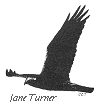
January 2018 Newsletter
Marsh Harriers on the Dee estuary.
Colour Ring Report.
December Bird News.
Forthcoming Events.
Latest Newsletter.
Marsh Harriers on the Dee estuary
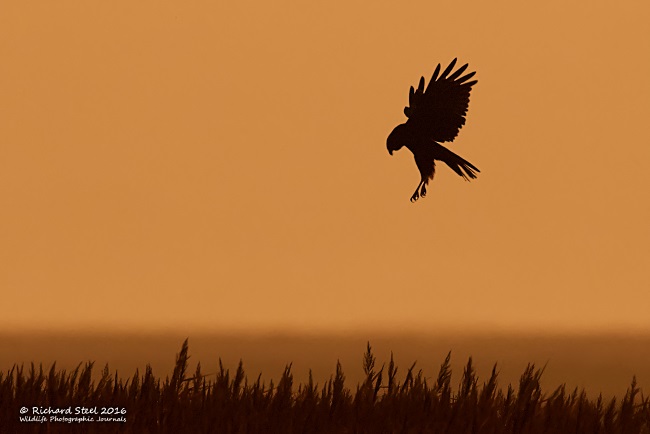
http://wildlifephotographic.blogspot.co.uk/
There has been exceptional numbers of Marsh
Harriers on the Dee Estuary over the past couple of years, particularly
over the winter. This increase appears to have happened quite suddenly,
coinciding with the establishment of a winter roost site in Neston Reed
Bed. Quite how many birds are involved is difficult to say as roosts
are notoriously difficult to count with birds, already counted once,
flying up from the roost
as other birds fly in - but the general consensus is that it is in
double figures. I've been fairly conservative with my estimates in the
graphs below but there have been counts from some as high as 26!
Analysing the records it seems pretty obvious there was a big increase
last winter (2016-17) when no less than 35 times groups of two
or
more birds were seen in the air together on the estuary - compared to
18 times the
previous winter, 15 times in 2014-15 and NONE at all in 2013-14 and
2012-13. So my conclusion is that a roost was probably first
established in
2014-15 although, interestingly, the only birds reported coming in to
roost that winter were at Parkgate. The max roost counts I've used in
the graphs was 12 for the winter of 2016/17 and 15 for the current
winter (Dec 2017), actual numbers may well be considerably higher.
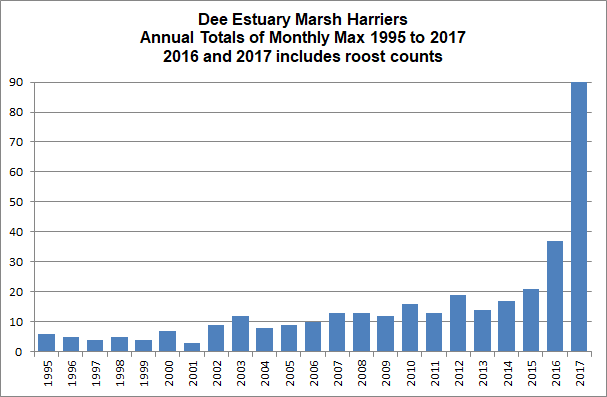
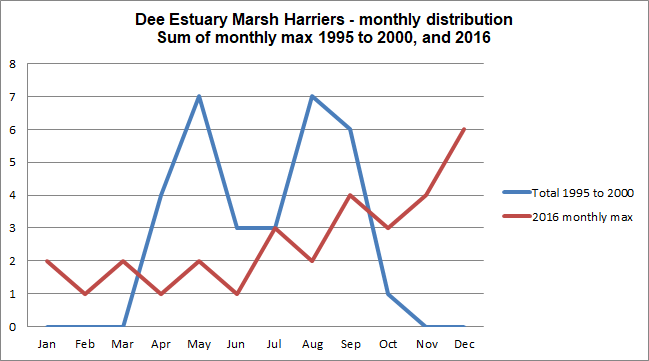
The monthly max in this second graph is the max count of birds seen in the air together at any one time, not totals of birds coming in to roost.
Where have all these birds come from? As you will see below numbers of Marsh Harriers have shown a huge increase in the UK since the low point of 1971, locally they have started breeding at nearby Frodsham Marsh as well as further north in Lancashire where between four to five pairs breed regularly. But a few birds sighted which have been wing-tagged in Norfolk hint at a westward movement from their stronghold on the east coast.
To put all this into perspective here are some UK and Dee Estuary highlights and lowlights over the past 50 years or so (note that number of breeding females are usually used to quantify numbers breeding as males are often 'paired' with two or three females) :
1966
to 1978 - birds recorded in just five of those 13 years on
the Dee estuary, all singles.
1971 - just
one pair bred in the UK.
1979 -
records become annual on the Dee estuary from 1979 onwards.
1981 to 1984
- as few as 10 birds were wintering in the UK over this period.
1987 - first
breeding at Leighton Moss (Lancs).
1995 - at
the time a record breaking year for the Dee estuary with 20
records, all between April and September.
1995 - a
National Survey finds 156 breeding females in UK, all on east
coast apart from Leighton Moss.
2002 - first
Dee estuary record of three in air together (June).
2002/03 -
first winter records on the Dee estuary, one in December and one in
January.
2005 - a
National Survey finds c400 breeding females in UK.
2007/08 -
first winter on Dee estuary when one to two birds stayed the whole
winter with multiple records.
2007 to 2011
- some winter roost sites in East Anglia and SE England hold up to 100
birds.
2010 - first
breeding at Frodsham Marsh (just off Mersey estuary), one to three
pairs have bred every year since.
2012 - first
Dee estuary record of six birds present (August), two of which are
juveniles tagged in Norfolk.
2014 - a
pair showed signs of breeding at Neston Reedbed, but attempt was
abandoned.
2015 - Rare
Bird Breeding Panel estimates total of 435 breeding females in the UK.
2016/17
- first winter when it became obvious that there was a sizeable
wintering roost at Neston Reedbed with at least 12 birds
present.
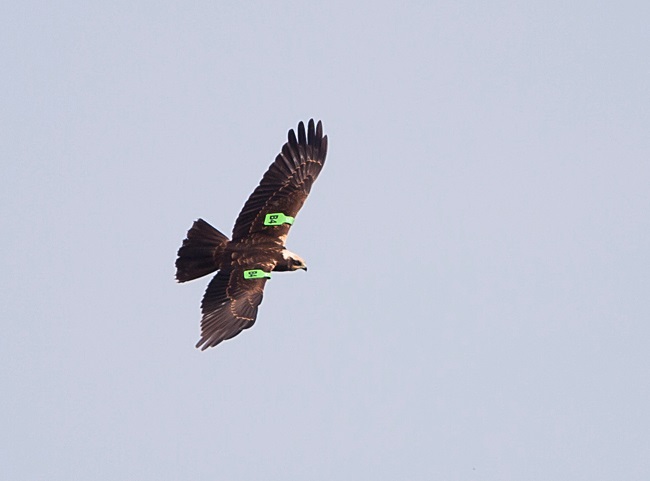
References and Further Reading:
1. Latest Sightings - Dee Estuary Birding Website (1998 to 2017).
2. Cheshire and Wirral Bird Reports 1966 to 2014, CAWOS.3. D. Norman, Birds in Cheshire and Wirral (2004 to 2007 Atlas), CAWOS.
4. BTO Bird Atlas 2007-11.5. British Birds December 2017 (RBBP 2015 Report).
6. Rare Breeding Birds Panel Reports (on-line) - see www.rbbp.org.uk.7. Study Tracks Harrier Migration, Hawk and Owl Trust, August 2012.

Top of Page
Colour Ring Report
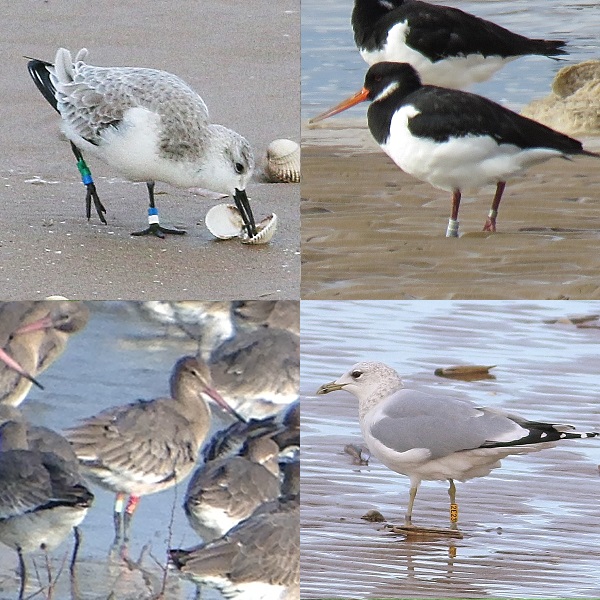
Sanderling
G4BWGB
Ringed on Sandgeroi beach, SW Iceland, on 24th May 2017.
Recorded at Leasowe Bay on 2nd December 2017.
Good to see another colour-ringed Sanderling after a couple of poor
winters.
Oystercatchers
Light blue ring with bar code '110' (see photo above).Ringed at Arkholme on the River Lune, Lancs, on 12th June 1993 as a chick, and subsequently bred at the same location including May 2017.
Recorded on Hoylake Shore at least five times during Sep to Dec 2017.
Left tarsus light blue ring with bar code '100' and dark blue ring on right tibia.
Ringed at Arkholme on the River Lune, Lancs, on 10th June 2003, as a breeding male on the nest.
Recorded on Hoylake Shore on 6th November 2017.
There are very few schemes which use these bar code rings, and this particular scheme wasn't on the latest version of the on-line colour-ring register, so took some tracking down. Turns out the scheme was never transferred from paper to electronic form. Thanks to Richard du Feu for managing to contact the ringers.
Common Gull
2E23 - black on yellow ring.Ringed on the Isle of Arran, Ayrshire,
7th July 2014 as an adult.
Recorded at Hoylake in November 2014 and August and September 2015, and
at Leasowe Bay on 2nd December 2017.
Black-tailed Godwit
OL-RZ - ringed in southern Iceland on 4th July 2012 as a breeding male.This bird shows some interesting movements when away from Iceland, it returns to SE England in the late summer/autumn before heading north-west to the Dee estuary for the winter, it then heads back to SE England in March and April before flying to Iceland to breed. This winter it turned up at the Caldy Wildfowl Collection on December 14th.
Richard
Smith.
Colour-rings were also recorded by Steve Hinde, Matt
Thomas, Les Hall, Colin Schofield, Elliot Montieth and Charles Farnell.
December Bird News
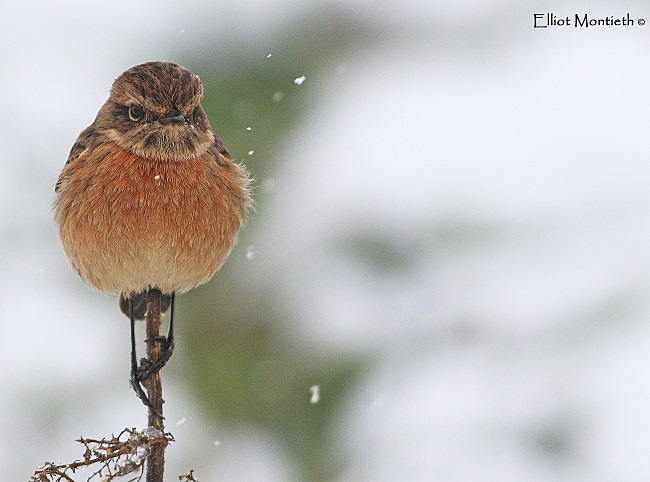
elliotsbirdingdiaries.wordpress.com/
Wildfowl were in the news with a record count, for Hilbre, of 360 Brent
Geese
towards the end of the month (highest count for the estuary as a whole
was set last winter with 402). Two Goosanders were on West Kirby Marine
Lake for several days, perhaps the same ones as last winter? Nine
Greenland White-fronted Geese were on Warren Farm Fields at Talacre for
several days and the Eider flock at Hilbre had reduced from 10 to
five.
After two winters of very low numbers it is good to see large flocks of Knot on the estuary, probably at least 30,000 for the whole estuary including a regular roosting flock just off Thurstaston Beach of over 20,000 - the noise these make on a still day when flushed by the tide is just astonishing. Strong winds during high spring tides resulted in 12 Purple Sandpipers on the pontoon on New Brighton Marine Lake, flushed from the rocks by the waves. A Little Stint and a late Avocet were at Burton Mere Wetlands.
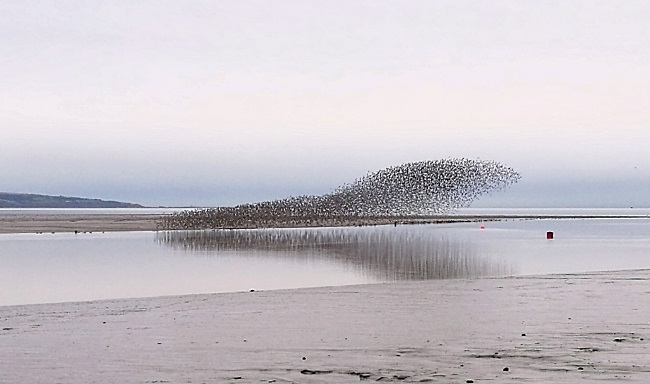
www.fromthemuddybanksofthedee.com
Marsh Harriers feature in the main article, above, and max counts were
both at the Neston Reed Bed roost with 12 on the 2nd and 14 on the
11th. Two Grey male Hen Harriers are still around
although I'm not sure how many ring tails there are - probably two or
three. Disappointingly, the high tides didn't produce any Short-eared
Owls at Heswall but there were plenty at Burton and Neston with at
least 10 on the 18th. A Bittern was flushed by a Marsh Harrier at
Parkgate early in the month.
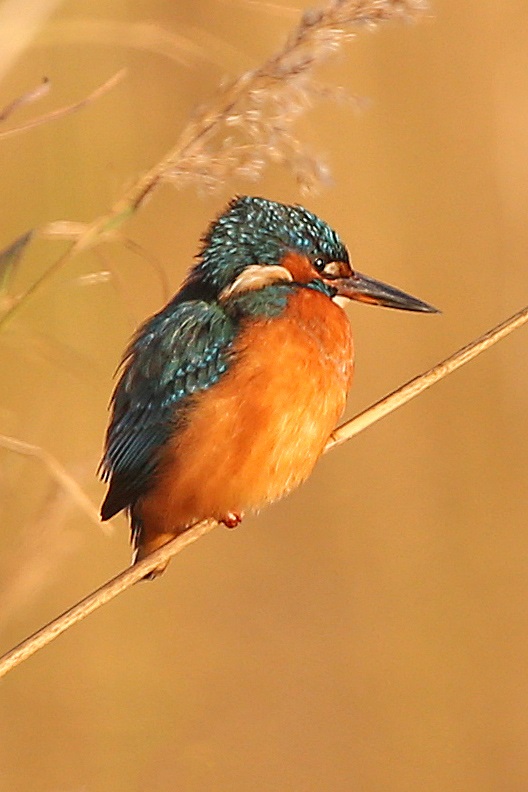
There were several reports of single Kingfishers including this one
above, making for a splendid photograph. Other notable birds were two
Snow Buntings at Leasowe Bay, a Black Redstart at Hoylake and an
Iceland Gull at Burton Mere Wetlands.
Top of Page
What to expect in January
Waders will be present in their thousands, particularly Knot which should give some spectacular displays at the roost sites at Hoylake, West Kirby and Point of Ayr. The pontoon on New Brighton Marine Lake is a very reliable spot to see Purple Sandpipers, perhaps reaching 20 or more on a windy day when waves force them off the rocks at high tide.
Keep an eye out for Water Pipits around the Neston Old Quay area - over the past couple of winters we have come to realise there are more there than previously thought with up to four regular, plus one or two at Burton Mere Wetlands.
There are some big tides due early in the month which should result in quite a spectacle if there is a west wind which pushes it over the marshes giving great views of Short-eared Owls, Marsh and Hen Harriers as well as thousands of wildfowl and waders.
Top of Page
Forthcoming Events
January Highest Spring Tides (Liverpool)
Also
see Tides
page.
3rd January, 11.45hrs (GMT), 9.9m.
4th January, 12.33hrs (GMT), 10.0m.
5th January, 13.21hrs (GMT), 9.8m.
Forthcoming Events
Organised by the Wirral
Ranger Service , Flintshire
Countryside Service and the
RSPB (Dee Estuary):
All these events and walks have bird interest, even those not
advertised specifically for birdwatching. No need to book for these
events unless specified - please check below.
Thursday 4th
January, High Tide Raptor Watch at Parkgate.
10.30am to 1.30pm.
Free.
For further details ring 0151 353 8478.
Come
along to the car park at the Old Baths for the chance of seeing a range
of birds of prey hunting over Parkgate Marsh. Harriers, peregrines and
merlins all spend the winter months on the estuary and this is one of
the best places to watch them, plus short-eared owls if we're really
lucky. This biggest tide of the month is 10.0metres around 12.30pm
which, if there is low pressure and a westerly wind, could push the
wildlife in close. Also chance of seeing a range of ducks, geese,
wading birds and egrets as they are pushed upstream by the rising tide.
There
is free public parking at the Old Baths car park (CH64 6RN) at the
north end of The Parade, and the Wirral Country Park car park on
Station Road (CH64 6QJ). There are public toilets at Mostyn Square in
the middle of The Parade, and a number of pubs and cafes.
Sunday 14th
January, Big Farmland Bird Walk at Burton
Mere Wetlands.
8-10am.
Price: £10 per person (£8 RSPB members)
Booking essential,
ring: 0151 353 8478.
Join us on this exclusive early morning, behind-the-scenes walk to get
closer to the managed farmland parts of the reserve and hopefully find
a range of songbirds alongside large flocks of others you might see on
your Big Garden Birdwatch.
Large flocks of small farmland birds - particularly linnets and reed
buntings - feed on our bird cover crop, along with flocks of gold and
greenfinches and other more familiar garden birds. These in turn
attract merlins, sparrowhawks and hen harriers to hunt.
The nearby wet pasture and barley stubble offer excellent natural
grazing for the geese and swans spending the winter on the estuary and
this walk should provide closer views particularly of the swan flock on
the neighbouring Shotwick Fields.
Please note this event is weather-dependent. A cold, hard winter will
push more birds to the west coast, so we'll keep our fingers crossed!
Wear wellies and warm, waterproof clothing, and bring binoculars if you
have them. Price includes a hot drink in the Reception Hide afterwards.
Places are limited so advanced booking and payment are essential.
Winter Wonders
of
Hilbre Island
Join the
Rangers
and
RSPB for a gentle stroll to the islands at low tide to seek Brent
Geese, Purple
Sandpipers and Grey Seals.
Booking
essential, via email: westkirbyhoylakemeolsparks@wirral.gov.uk
£5.00 per person
– all money raised will
go directly to conservation on the Dee Estuary.
Meet by noticeboard at West Kirby Sailing School car park at the north end of the marine lake.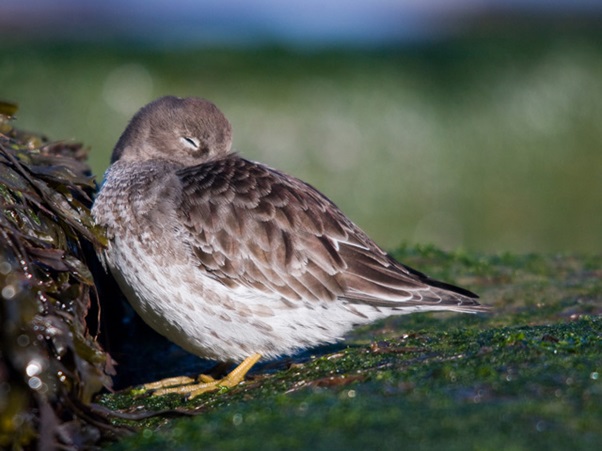
Purple Sandpiper on Hilbre.
Friday 2nd
February, High Tide Raptor Watch at Parkgate.
10.30am to 1.30pm.
Free.
For further details ring 0151 353 8478.
Come
along to the car park at the Old Baths for the chance of seeing a range
of birds of prey hunting over Parkgate Marsh. Harriers, peregrines and
merlins all spend the winter months on the estuary and this is one of
the best places to watch them, plus short-eared owls if we're really
lucky. This biggest tide of the month is 10.0metres around 12.20pm
which, if there is low pressure and a westerly wind, could push the
wildlife in close. Also chance of seeing a range of ducks, geese,
wading birds and egrets as they are pushed upstream by the rising tide.
There
is free public parking at the Old Baths car park (CH64 6RN) at the
north end of The Parade, and the Wirral Country Park car park on
Station Road (CH64 6QJ). There are public toilets at Mostyn Square in
the middle of The Parade, and a number of pubs and cafes.
Saturday 17th February, Hoylake High Tide Birdwatch.
10.30am-12.30pm
Price: Free
Join
the Coastal Rangers, the Dee Estuary Voluntary Wardens and the RSPB on
this high tide birdwatch at Hoylake promenade to see large flocks of
wading birds as they gather and roost on the shore. We should see
dunlin and knot numbers at their peak as we reach the end of winter,
plus a range of other wading birds for whom this North Wirral coastline
is a vitally important home. With a rising tide, we should see the
birds at close quarters as they roost and feed.
Beginners welcome
- a great opportunity to brush up on your wader ID with knowledgeable
guides. Dress warmly and bring binoculars if you have them. Telescopes
will be available to use throughout. No need to book.
Look for the
white RSPB information trailer on King's Parade, Hoylake between the
bottom of King's Gap and Trinity Road. There are public toilets nearby
and various cafes and pubs for refreshments in Hoylake.
High Tide at 11.55am.